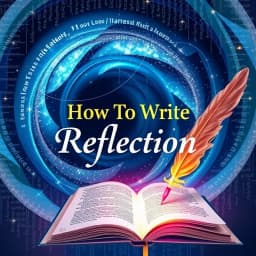
How to Write Reflection
Find this useful? Bookmark ( CTRL/CMD + D ) for quick access!
Try an example:
Personal Growth Journal
Academic Reflection Paper
Professional Development Review
Creative Writing Reflection
Therapeutic Self-Reflection
Project Post-Mortem Analysis
Explore Similar Tools
Recent Generations
the amount paid directly to you. Yes it is possible in future cases to request direct payment to the provider, Rephrase and give me polished email.
we have processed the claim as per the attachments in the claim submission we have processedthe invoice for Saul Holding. We dont have invoice for the Salofalk.
this additional information is very important. this adiitional information was requested by our clinical team. Without clinical review claim not be paid so please share the below additional information
How To Write Reflection is a powerful AI-powered writing tool that helps users craft insightful and meaningful reflections. This innovative solution combines advanced natural language processing with user-friendly features to deliver high-quality, personalized reflection writing.
Key Capabilities
- Guided Reflection Prompts: Generate tailored prompts that encourage deeper thinking and self-analysis, enhancing the quality of your reflections.
- Real-time Feedback: Receive instant suggestions and improvements on your writing, ensuring clarity and coherence in your reflections.
- Customizable Templates: Access a variety of templates designed for different reflection styles, making it easy to adapt your writing to specific contexts or requirements.
- Plagiarism Checker: Ensure originality with built-in plagiarism detection, giving you peace of mind that your reflections are unique and authentic.
Who It's For
Designed for students, educators, and professionals, How To Write Reflection excels in academic and personal development contexts. Whether you're writing for a class assignment, a personal journal, or professional growth, this tool streamlines your reflection process and enhances your writing skills.
Why Choose How To Write Reflection
What sets How To Write Reflection apart is its ability to provide personalized guidance and feedback, making it the ideal solution for anyone looking to improve their reflective writing skills.
Ready to transform your reflection writing process? Start using How To Write Reflection today and experience the difference!
Enhance Your Work with How to Write Reflection
Leverage the power of AI to streamline your tasks with our How to Write Reflection tool.
Guided Reflection Prompts
Receive tailored prompts that guide you through the reflection process, helping you articulate your thoughts clearly.
Smart Suggestions
Get intelligent suggestions for improving your writing style and enhancing the depth of your reflections.
Structured Framework
Utilize a structured framework that organizes your reflections, making it easier to analyze and revisit your thoughts.
How How to Write Reflection Works
Discover the simple process of using How to Write Reflection to improve your workflow:
Input Your Reflection Topic
Begin by entering the topic or prompt for your reflection to guide the writing process.
Draft Your Reflection
Utilize our AI suggestions to help you draft your reflection, ensuring clarity and depth.
Review and Revise
Review the AI-generated content and make any necessary revisions to personalize your reflection.
Save and Share
Once satisfied, save your reflection and share it with others or keep it for personal use.
Use Cases of
How to Write Reflection
Explore the various applications of How to Write Reflection in different scenarios:
Personal Growth Journaling
Assist individuals in writing reflective journals to track personal development, emotions, and experiences over time.
Educational Reflection for Students
Guide students in writing reflections on their learning experiences, helping them to analyze their understanding and growth in various subjects.
Professional Development Reviews
Support professionals in crafting reflective essays or reports that evaluate their career progress, skills acquired, and future goals.
Therapeutic Reflection
Aid therapists and clients in documenting reflections on therapy sessions, promoting deeper understanding and emotional processing.
Who Benefits from How to Write Reflection?
AI-Powered Efficiency
From individuals to large organizations, see who can leverage How to Write Reflection for improved productivity:
Students
Enhance learning by reflecting on experiences and improving critical thinking skills.
Educators
Facilitate deeper understanding in students through guided reflection techniques.
Professionals
Improve personal and professional growth by reflecting on work experiences and lessons learned.
Mental Health Practitioners
Support clients in processing their thoughts and emotions through structured reflection.
Frequently Asked Questions
What is the purpose of the 'How To Write Reflection' AI tool?
The 'How To Write Reflection' AI tool is designed to assist users in crafting reflective writing pieces by providing guidance, structure, and suggestions tailored to individual experiences and insights.
Is the tool suitable for all types of reflective writing?
Yes, the tool can be used for various forms of reflective writing, including personal reflections, academic reflections, and professional development reflections, making it versatile for different contexts.
How does the AI generate suggestions for my reflection?
The AI analyzes the input provided by the user, including key themes and experiences, and generates tailored suggestions based on best practices in reflective writing and relevant prompts.
Can I customize the output generated by the tool?
Absolutely! Users can modify the suggestions and structure provided by the tool to better fit their personal voice and style, ensuring that the final reflection is authentic and meaningful.
Is there a limit to how much I can write using the tool?
There is no strict limit to the amount of text you can input or generate with the tool. However, for optimal performance, we recommend breaking down larger reflections into smaller sections.
































